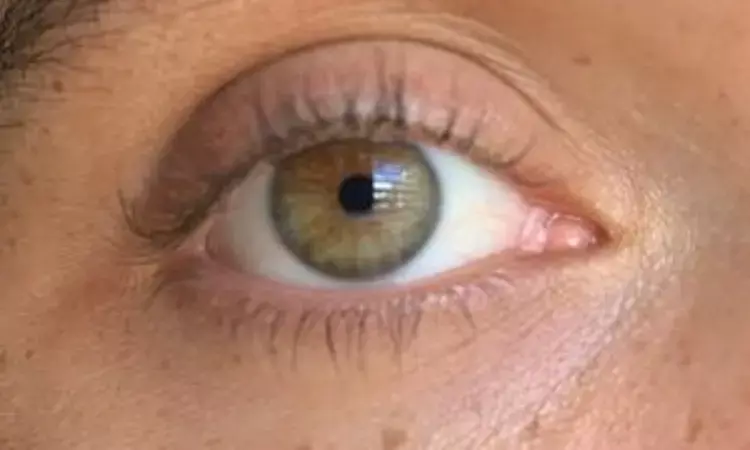- Home
- Medical news & Guidelines
- Anesthesiology
- Cardiology and CTVS
- Critical Care
- Dentistry
- Dermatology
- Diabetes and Endocrinology
- ENT
- Gastroenterology
- Medicine
- Nephrology
- Neurology
- Obstretics-Gynaecology
- Oncology
- Ophthalmology
- Orthopaedics
- Pediatrics-Neonatology
- Psychiatry
- Pulmonology
- Radiology
- Surgery
- Urology
- Laboratory Medicine
- Diet
- Nursing
- Paramedical
- Physiotherapy
- Health news
- Fact Check
- Bone Health Fact Check
- Brain Health Fact Check
- Cancer Related Fact Check
- Child Care Fact Check
- Dental and oral health fact check
- Diabetes and metabolic health fact check
- Diet and Nutrition Fact Check
- Eye and ENT Care Fact Check
- Fitness fact check
- Gut health fact check
- Heart health fact check
- Kidney health fact check
- Medical education fact check
- Men's health fact check
- Respiratory fact check
- Skin and hair care fact check
- Vaccine and Immunization fact check
- Women's health fact check
- AYUSH
- State News
- Andaman and Nicobar Islands
- Andhra Pradesh
- Arunachal Pradesh
- Assam
- Bihar
- Chandigarh
- Chattisgarh
- Dadra and Nagar Haveli
- Daman and Diu
- Delhi
- Goa
- Gujarat
- Haryana
- Himachal Pradesh
- Jammu & Kashmir
- Jharkhand
- Karnataka
- Kerala
- Ladakh
- Lakshadweep
- Madhya Pradesh
- Maharashtra
- Manipur
- Meghalaya
- Mizoram
- Nagaland
- Odisha
- Puducherry
- Punjab
- Rajasthan
- Sikkim
- Tamil Nadu
- Telangana
- Tripura
- Uttar Pradesh
- Uttrakhand
- West Bengal
- Medical Education
- Industry
Patients with gout show tear function alterations and conjunctival change: Study

Turkey: Gout patients had greater ocular surface changes as measured by conjunctival impression cytology (CIC) and tear function abnormalities, finds a new study conducted by Selman Belviranli and the team.
Gout is a lesser-known risk factor for dry eye disease, but this inflammatory arthritis is becoming more common as the population ages. Clinicians may discover dilated conjunctival vessels in gout patients, as well as symptoms produced by the presence of monosodium urate crystals (MSU) in the preclinical ocular environment.
The purpose of this study was to compare the tear functions and conjunctival impression cytology (CIC) findings of gout patients to healthy controls. The findings of this study were published in the journal of Eye and Contact lens, on 20th August 2021.
This cross-sectional study comprised 34 gout patients (group 1) and 32 age- and gender-matched healthy people (group 2). The Schirmer 1 test, tear breakup time (TBUT), Ocular Surface Disease Index (OSDI) score, and CIC grade were all assessed and compared between groups.
In terms of gender and age, there was no statistically significant difference between the groups. The mean Schirmer 1 test results in group 1 was considerably lower than that in group 2. The TBUT in group 1 was likewise substantially lower than in group 2. Group 1 had a substantially higher OSDI score than Group 2. Despite the fact that 10 patients (29.4%) in Group 1 had a CIC grade of 2 to 3, none of the controls had a CIC grade of 2 to 3. Group 1 had a substantially higher mean CIC grade than Group 2.
MSU crystals can form in a patient's joints as well as tissues outside the joints when uric acid levels are high. MSU crystals have been seen in the periocular and ocular areas, but how frequently they go unnoticed by standard clinical testing is uncertain. According to this research, the eye has "poor solvent capacity" for MSU and a lower temperature. "Because investigations on ocular surface findings in gout patients are scarce," the researchers say, "clinicians' knowledge of this issue should be improved."
Reference:
Belviranli, S., Turk, H. B., Oltulu, P., Turk, N., Mirza, E., Küçük, A., Aydemir, H., & Oltulu, R. (2021). Tear Function Alterations and Conjunctival Impression Cytology Findings in Patients With Gout. In Eye & Contact Lens: Science & Clinical Practice: Vol. Publish Ahead of Print. Ovid Technologies (Wolters Kluwer Health). https://doi.org/10.1097/icl.0000000000000832
Medical Dialogues consists of a team of passionate medical/scientific writers, led by doctors and healthcare researchers. Our team efforts to bring you updated and timely news about the important happenings of the medical and healthcare sector. Our editorial team can be reached at editorial@medicaldialogues.in.
Dr Kamal Kant Kohli-MBBS, DTCD- a chest specialist with more than 30 years of practice and a flair for writing clinical articles, Dr Kamal Kant Kohli joined Medical Dialogues as a Chief Editor of Medical News. Besides writing articles, as an editor, he proofreads and verifies all the medical content published on Medical Dialogues including those coming from journals, studies,medical conferences,guidelines etc. Email: drkohli@medicaldialogues.in. Contact no. 011-43720751


